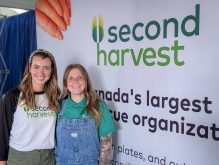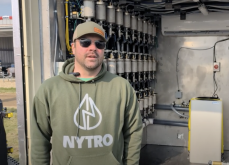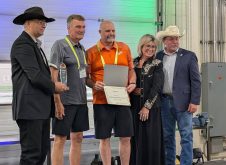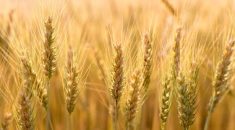ATP Nutrition, which made headlines last year with their Nutriscan portable soil lab, has upgraded the system to scan nutrients in the leaf tissue of plants.
The company spotlighted the technology at this year’s Ag in Motion farm show in Langham, Saskatchewan.
Dan Owen, director of agronomy for ATP, said scanning the leaf tissue is based on the same technique they use on soil samples.
Read Also

Lending policy still focused on primary producers: FCC
Farm Credit Canada said it has not changed its business practices and remains committed to supporting all producers, after a report from an Ottawa-based media outlet claimed otherwise.
“The unit itself is a near-infrared scanner, which has been around for about 40 years,” said Owen. “The novelty of this unit is actually the algorithms and computer power used to generate the recommendation from it.”
For soil samples, the farmer or agronomist would collect the sample in the traditional way. It’s scanned five times with the scanner to get a good average, and then in about two minutes, it sends the soil test results to a smartphone, listing the macronutrients, micronutrients and soil characteristics.
But Owen said he’s excited about the new feature of the unit.
“Up until now, it takes three to five days to get that information back, by which time that information isn’t necessarily usable because the spray pass has gone through the field,” said Owen.
For the leaf tissue test, a selection of leaves is taken from the plant and scanned the same way the soil is scanned. And once again, in about two minutes, the results of the test pop up on the user’s smartphone.
“Now we can actually act immediately to rectify nutrition,” said Owen.
He added that as this process is repeated through the season, it can help to build the next year’s fertility programs because the farmer can map what’s happening through the season.
“So now we can start to say, Okay, so I’m seeing boron deficiency in my crop at this point in time, through the growing season. Maybe I should think about fixing that or doing something about that in the soil before we start next year,” he said.
The leaf tissue test launched on May 1 this year, and it was a two-year process to calibrate the unit. That process involved growing a bunch of different crops in their laboratories with varying levels of nutrient concentrations. They scanned those plants and sent the data to a company in the Netherlands that crunched the data and put it through a machine learning database so that it correctly identifies the nutrient levels in the scan.
Owen said people are used to getting instant information these days and can now access plant nutrition data instantly.
“We can have instant nutritional information to make sure that we better steward our nutrients,” he said.















